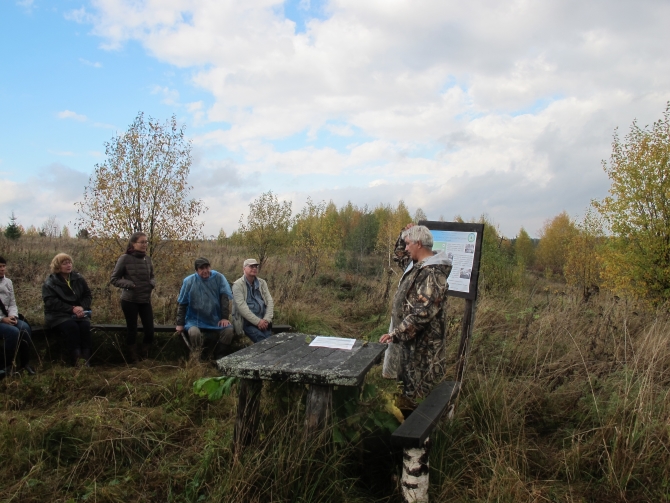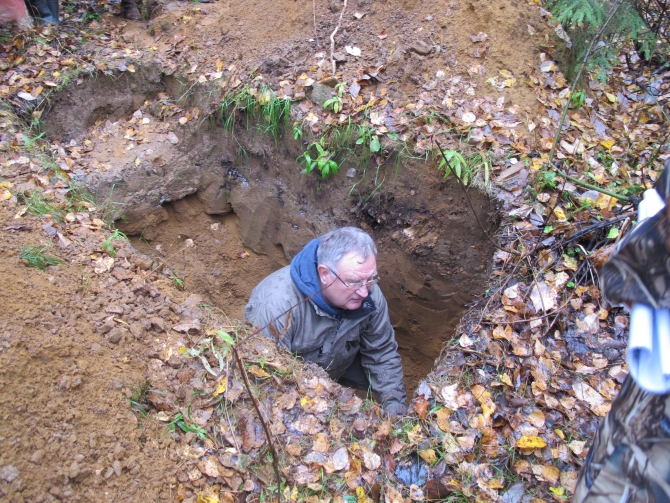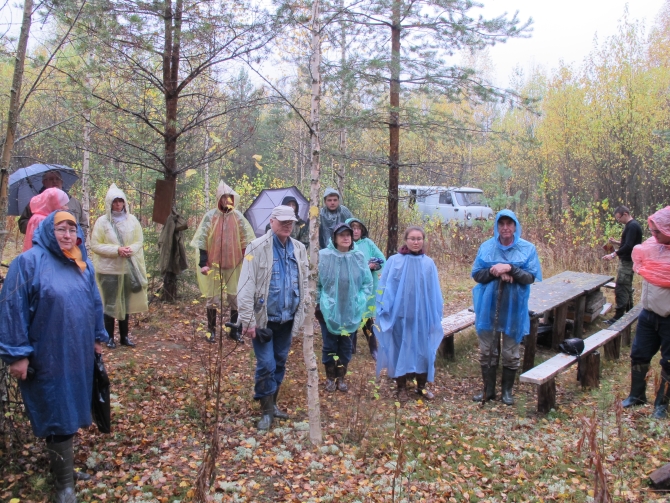Forest Soils of the Middle Taiga: Consequences of the Human Intervention
7 soil scientists from different regions of Russia, participants of the 6th All-Russian Scientific Conference “Fundamental and applied aspects of forest soil science” that was held in Syktyvkar from September 14-19, visited demonstration objects of the Komi Model Forest during a scientific tour devoted to the current changes of the middle taiga forest soils. The tour was arranged and conducted by Yury Pautov (Silver Taiga Foundation) and Aleksey Dymov (Institute of Biology of the Komi Scientific Center of the Ural Branch of RAS).
Silver Taiga together with the Institute of Biology had preliminary prepared eight demonstration objects with soil profiles demonstrating different types of soils and their transformation after different kinds of human intervention.
What happens to forest soils after agricultural use? Do they recover after further overgrowing with forest and how fast does it happen? How do soils transform under the influence of loggings and what is the duration of these transformations, how do they influence on the processes of renewal and growth, and on the spatial structure of secondary forest stands forming in the logged areas? Does the fertility of forest soils affected by the modern heavy harvesters recover and how fast? These and many other questions engendered heated discussions between representatives of different scientific schools on each demonstration object.
The participants were especially impressed by the duration of the consequences of the impact on forest soils. During the tour they had a chance to see with their own eyes that even after 80 years since the former agricultural fields had been grown over, these consequences remain in the structural profile, in the mechanical and chemical content of soils.
As was mentioned by the tour participants, such objects are an optimal method of a scientific monitoring, and it’s a great merit of the Komi Model Forest project, as in the frames of this project the chronology and the sequence of the human intervention had been detected and all this had been shown on the maps and on site.
It must be noted that all data on the assessment of the impact of the forest use, as well as the results of the morphological and analytical studies of forest soils with different degree and different nature of the human intervention are represented in the guidebook of the scientific tour “Modern changes of the middle taiga forest soils”. This guidebook was prepared cooperatively by the Institute of Biology of the Komi Scientific Center of the Ural Division of RAS and the Silver Taiga Foundation and issued just before the conference. This publication shows the history of the forest use and related transformation of soils on the territory of the Syktyvdinsky and Priluzsky districts of the Komi Republic, describes demonstration objects of the tour route, gives brief reference information on the Komi Model forest.

At the review point of the route “Man and forest: history of relations”. Yury Pautov: “600 years ago these fields were a forest”

V.S. Stolbovoy, Dr.Sc. (Geography), from Moscow is evaluating the changes of the soil profile on the former skidding road after 30 years since logging
Photo by Alexey Dymov




